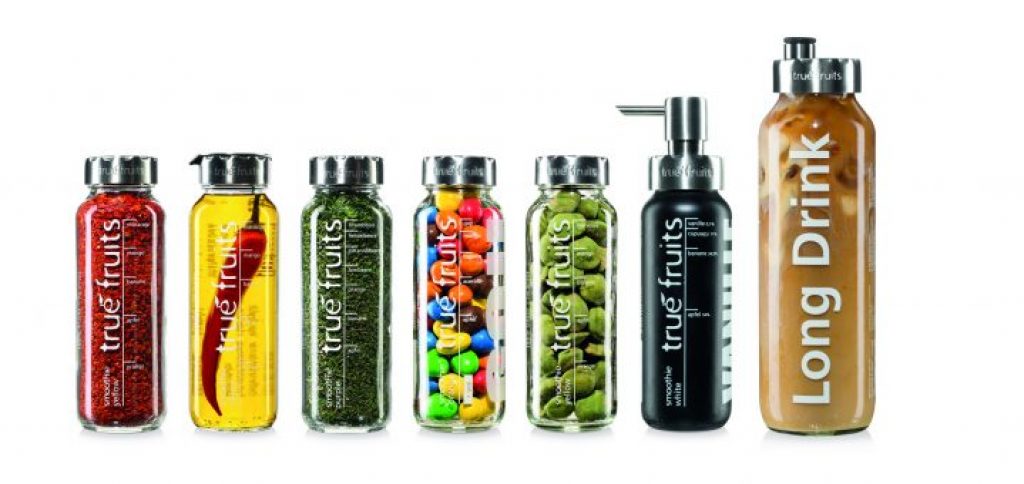Themed Week Flexibility: Think outside the box and stay on the ball – packaging opens up opportunities

Every single day, billions of people around the world buy consumer goods and food. The majority of these purchases come in some form of packaging. Beyond protecting its contents, packaging has also come to be an important tool for marketing and branding, given its important function of conveying messages to the consumers. Even when it comes to soft drinks, a customer’s decision to buy or not to buy a product is often influenced by the packaging.
Andreas Steinle, Managing Director of Zukunftsinstitut Workshop, sheds some light on the situation: “More and more importance is being placed on what packaging looks like–and the emotions this evokes–and this is becoming increasingly influential in our consumer society. This is even more so the case in our complex world given that it is quicker for us to think with our stomachs rather than our heads.”
A direct correlation with product quality
A study conducted by Mintel confirms this point of view. For example, the agency for market intelligence has revealed that as many as a third of all US consumers believe that premium packaging for food and drink can be taken as an indication of the quality of the product inside. In the UK, three out of five consumers base their choice of drink on the format of the packaging. Mintel’s overall verdict is: “Good packaging protects the product; excellent packaging protects the brand.”
What makes a drink’s packaging ideal?
So now you may be wondering what exactly excellent drinks packaging looks like. Well, industry insiders more or less agree on what ideal means; a unique design, additional functionality, flexibility, convenience, and resource efficiency are all important aspects. Andreas Steinle stresses that the balance between packaging innovations and efficient production technology required here is something the industry is continually learning to master more effectively. As a result, the drinks sector is putting itself in a stronger position to respond to trends, such as flexible packaging and packaging for on-the-go products.
A link between environmental and economic sustainability
Looking back over the past few decades, we have progressed in leaps and bounds. Take the production of glass for containers, for instance, which now uses 60 percent less energy than back in 1965. We can now produce 80 percent more cardboard than we could with the same amount of wood in 1985 and in 1955 a drinks can was four times as heavy as it is today. On top of all that, recycling processes continue to be optimized and biodegradable plastics are growing in popularity.
Nicolas Eilken, Founder and Managing Director of Eilken Brand Building, says: “Sustainability is increasingly becoming an accepted part of our day-to-day lives, making it less conducive to greenwashing, which manufacturers fall back on because more often than not economic sustainability is an upshot of environmental sustainability.”
A shelf full of innovative soft drinks
There are also countless case studies from within the soft drinks sector to suggest that the strategy of combining individuality and additional functionality with flexibility is an effective one. The company POM Wonderful, for example, saw sales for its new super tea jump by 17 percent within the space of a year thanks to its layered pomegranate design. Danone’s approach to individualization and differentiation with its mineral water brand evian is another interesting example. 2017 marks the tenth year in which world-famous fashion designers have come up with a special design for a limited edition 750-ml glass bottle for the mineral water, with Christian Lacroix putting his creative stamp on the packaging this time.
Coca-Cola also had a rather nice idea for something a bit different when they created a limited edition bottle only available in Belgium with a label that doubles up as a ribbon and can be tied into a bow. Smoothie maker true fruits has come up with a concept that is equally simple yet effective. The company recently introduced the concept of upcycling for its 250-ml and 750-ml glass bottles and now has a whole range containing shakers, pourers, drinks bottle attachments, and dispensers, with used bottles being given a new life after they have been emptied of delicious smoothie. Not only does this give consumers the chance to do something that makes them feel warm and fuzzy inside, it is, don’t forget, a welcome source of income for the smoothie producers, who don’t exactly worry about keeping the prices for these products particularly low. You can get your hands on the dispenser set for EUR 15.99, while the drinks bottle attachment will set you back EUR 16.99.
A firm future focus on packaging innovations
The packaging team at Mintel expects that packaging will continue to play a key part in buyers’ decision-making processes going forward. At the moment and as we move into the future, it is important that the soft drinks sector continues to think outside the box and makes sure they are always on the ball when it comes to innovations.
At drinktec, Hall A2 will be the main place to discover innovative packing materials, packaging concepts and labeling solutions. Another focus will be on solutions for promotions and the point of sale, which will be located in Hall A1. There will also be a discussion on packaging ideas that may be set to take the industry by storm in future at the Innovation Flow Lounge, the networking platform for sales and marketing professionals. Visitors to the trade fair can also be sure to locate a packing innovation or two via the new digital services on offer for the event, including the Innovation Guide, which is part of the drinktec app.
Innovation Flow Lounge is supported by:
- Döhler
- FoodBev Media
- KHS
- Sahm GmbH
The sponsors of the 5 O’clock Theme include:
- KHS
- SIDEL
